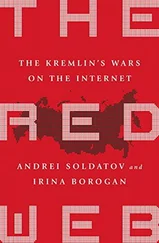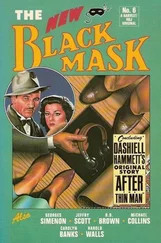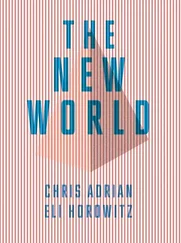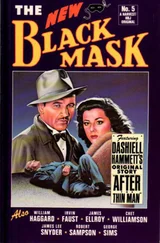But before I come to the details of this work, I would draw your attention to another matter. You are all familiar with the quartal harmony from the First Chamber Symphony, whose introductory theme is the motto for the Kranichstein course. 10Those of you who know the First Chamber Symphony well also know that these fourths are not, as people like to say, the theme of the Chamber Symphony but act only as architectural fastenings, whereas the main theme is this [plays] and not the fourths. Now, it is very interesting to observe that Schoenberg already has something very similar to the quartal harmonies of the Chamber Symphony in Verklärte Nacht . You recall these resolutions [plays] or this [plays] and all the others that appear in constant variation in the Chamber Symphony. Now, there is a characteristic central chord, a kind of seal, at the most characteristic turning points in Verklärte Nacht . And this is the famous chord that does not really exist, namely the inverted ninth chord where the suspended note is sustained beneath the resolved note, which, as you know, is forbidden in traditional harmony. This first appears on page 6 [plays Verklärte Nacht ], and so forth. The same chord returns later, really at the climax of the development, before a kind of intermediate reprise, one might say, of the slow introduction. So this is the main theme [plays], and then this returns [plays], then you have the chord again [plays]. […] And then you have it appearing importantly for a third time in a later passage – one second – I can’t find the passage just now. I am sure I can point it out to you later when I analyse it. Ah yes, on page 48, directly before the coda, this passage [plays], and there you have the chord again [plays], and so on. Now, this chord is not only interesting because it does not actually exist, but also for another reason, namely its quartal composition [plays]. It takes only a small alteration and you already have this fourth chord [plays]. Why did Schoenberg choose those chords at those turning points here and in the First Chamber Symphony, where it is very well known? Evidently because the function of holding the form together called for something that was remote from the chromatic material. The fastening cannot be made from the same material as the thing it is meant to fasten together; rather, in order to fulfil its function, it must have a certain transcendence, a certain character of otherness in relation to the immanent development of the music. Now, this material you have here is very much based on chromatic leading-note harmony in the manner of Wagner. In order to give these passages a real articulation, however, something has to be introduced as a kind of seal that is as different as possible from this chromatic leading-note material, namely chords: they have none of this urging, dominant-like character, no suggestion of leading notes, and in a sense they are inorganic. With the greatest skill, inorganic elements are sprinkled into the material for the purpose of articulation because this pan-organic material, this thoroughly chromatic material, could hardly be organized and crafted convincingly without this element of contradiction, without this inorganic component. In other words, the articulation of this expressive music occurs, to an extent, through the fact that expressionless elements are introduced at decisive moments to set the expression in relief. And that is where we must seek the root of an entire shaping approach in Schoenberg, or the origin of an entire layer of Schoenberg that, if one formulated a phenomenology of Schoenberg, would have to be described very closely. And that is the layer of coldness, the layer of which the conductor Kunwald once said, referring to the big resolution passage in fourths at the end of the Chamber Symphony’s development section, that it was a kind of glacial landscape. 11And this layer of coldness, which in a sense opposes expression in order to balance out the forces of expression, this layer is the one you first find in this famous chord [plays], and which you then find in the quartal chords and time after time.
Now, ladies and gentlemen, what I have told you here has, I think, extremely far-reaching implications for an understanding of one of the most characteristic phenomena of Schoenberg’s music, namely an understanding of Schoenbergian dissonance. We all tend at first, if we are coming from the Wagnerian perspective, to understand dissonance in the sense of an expressive principle and to say that it really emerged from the increasing need for expression. And I have, to this day, essentially adhered to this belief that dissonance should be explained only and essentially in terms of expression. But I think that, at the same time, it has an entirely different root. In Schoenberg it comes from both these inorganic elements, which – like silver ribs or pieces of metal put into a soft mass, have the function of articulating and holding together. So I would say that when, later on, Schoenberg’s complex sonorities are sometimes expressive, but sometimes the exact opposite of expressive, and have this peculiar – perhaps one can call it objectivity, an objective constructive power – that this already lies inside them, that these articulating, inorganic leading chords appear in this way in the early works. Let me now just note in advance that Schoenberg’s incredible sense of form is also evident, for example, in the fact that he does not simply take this main theme from the first part of Verklärte Nacht to articulate the second part too but, rather, introduces a second theme; he invents a kind of cadential theme that has the same function in the second part as this chord progression in the first [plays], and that is precisely the last theme I just played you, the one that appears before the coda, but also in many other places. I mean this theme [plays]. And only at the end [plays] does he bring these two sealing themes together, these two brackets, and thus brings about the unity of their function – whereas, in all the analogous passages in the second part, where before there was this strange ninth chord, this inverted ninth chord, he instead has exactly this cadential theme. That too, incidentally, is an element, a formal element, that you will find used in a far more conscious way in the First Chamber Symphony, which, as well as the fourths, has its own cadential theme that enters whenever there are perfect cadences, namely this theme [plays]. And this theme I just mentioned has exactly the same function here, in a slightly more primitive way. So you see that the genuinely revolutionary innovations undertaken by Schoenberg in the great chamber works from op. 7 to op. 10 were, both in their idea and in the technical approach, already present to a considerable extent in Verklärte Nacht .
Now I would like to consider a few details in Verklärte Nacht . But I will not analyse everything for you. I will not provide a complete analysis, least of all a purely thematic analysis, which is very simple in parts, and you can […]
[…] distinguish incredibly precisely between variable motifs and themes, that is, between themes that turn into something and themes that appear with a kind of claim to being, and which consequently have this form of exterritoriality I was describing to you earlier when I spoke about that inorganic quartal element, which is really one of the roots of the later dissonance. So he will not, for example, subject a theme like this [plays] to variation, because it is precisely the fact that this theme in its formal purpose always has a conclusive, a final character, if you will – if you were to develop variations on that, it would lose its whole sense. What he does, what he then does in the Chamber Symphony with incredible artifice, is to transform the endings of such themes in such a way that they always lead into new harmonic regions, that they always take on a different function. In their own substance, however, these themes are preserved. I would like to correct myself in a small matter, incidentally. You must not assume from what I have said that there are no adagio movements in the traditional sense in Schoenberg. The first movement of the Second Chamber Symphony, for example, is an adagio of the grandest kind, though somewhat exceptional in that respect – and indeed the Second Chamber Symphony as a whole, to which I would like to devote an entire lecture course one day, is one of the most exceptional of all works by Schoenberg.
Читать дальше












